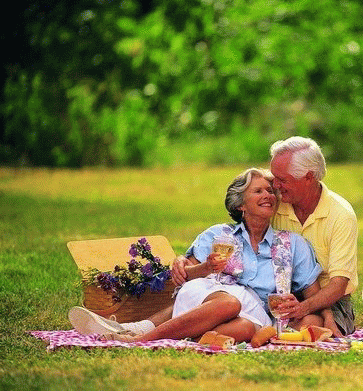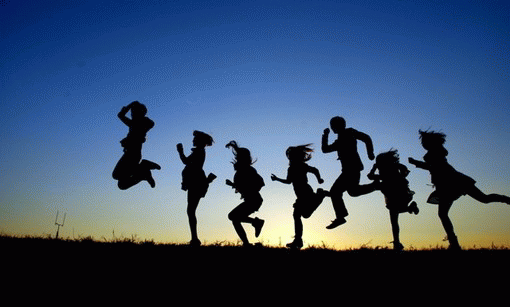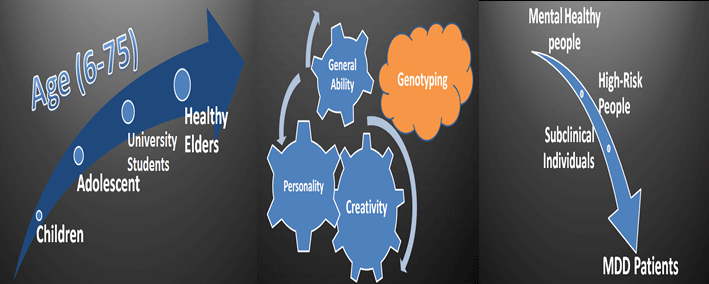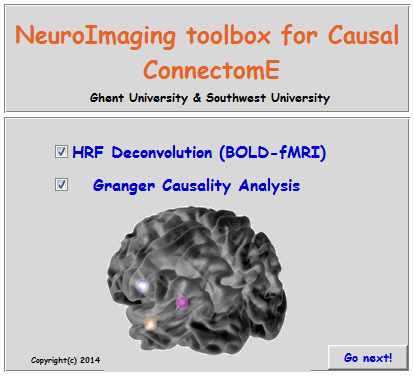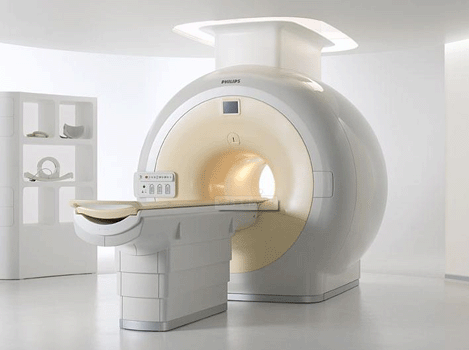
Resource:
From this page you could know more our Brain Imaging Databases:
In addition, we developed the Neuroimaging Toolbox for Causal Connectome
If you want access to our database or get involved in our research work, please Click Here
340 MDD patients and 200 carefully matched healthy individuals have been studied in this project, according to which, we want to find the brain, cognitive, affective and behavioral abnormalities in MDD patients and high-risk individuals. Subjective judgments of MDD are not always reliable, if objective indices like brain structure and functional biomarkers do exist in MDD patients or subclinical people, we want to find them and hence promote the early diagnosis of MDD.
In addition, we are also trying some interventional approaches on subclinical people to find better ways to help MDD people, experiments concerning cognitive training and brain stimulation (TMS, tDCS) have already been employed.
Data collected in this project includes:
fMRI data:
Resting-state fMRI data
High resolution 3D-T1 weighted image data
Diffusion tensor imaing data
fMRI experiments
Stroop
Attribution
Self-reference
Directed forgetting
Metacognition
Behavioral tests
Working Memory 2-back task
Stroop task
Stroop-Emotion task
Dot-probe task
Mental Arithmetic Task
Questionnaires
BDI (Beck Depression Inventory)
SDS (Self-rating depression scale)
HAMD (Hamilton Depression Scale)
DEQ (Depressive experiences questionnaire)
SCL-90 (Symptom Checklist 90)
HAMA (Hamilton Anxiety Scale)
SAS (Self-Rating Anxiety Scale)
STAI (State-Trait Anxiety Inventory)
TCSQ (Trait Coping Style Questionnaire)
SCSQ (Simplified Coping Style Questionnaire)
ASQ (Attributional style questionnaire)
EPQ (Eysenck Personality Questionnaire)
SES (Self-Esteem scale)
SRRS (Short version of the Ruminative Response Scale)
ATQ (Automatic Thoughts Questionnaire)
BAS-BIS (The BIS/BAS scales)
CERQ-C (Cognitive Emotion Regulation Questionnaire)
ERS (Emotion regulation questionnaire )
CFMPS (Frost Mutidimensional Perfectionism Scale)
MCQ (Metacognition questionnaire)
TSCS (Tennessee Self-Concept Scale)
LES (Life Event Scale)
More than 210 healthy elders (ageing from 50 to 80 years old) have participated in this study; most of them live in Beibei District of Chongqing City.
fMRI data:
a) Resting-state fMRI data
b) High resolution 3D-T1 weighted imaging data
c) Diffusion tensor imaging data
Questionnaires
EHI (Edinburgh Handedness Inventory)
MMSE (Mini-mental state examination)
MoCA (Montreal Cognitive Assessment)
PSQI (Pittsburgh sleep quality index)
EPQ (Eysenck Personality Questionnaire, EPQ)
PANAS (Positive and Negative Affect Schedule)
HAMD (Hamilton Depression Scale)
GDS (Geriatric Depression Scale)
CES-D (Center for Epidemiologic Studies Depression Scale)
SDS (Self-rating depression scale)
HAMA (Hamilton Anxiety Scale)
SAS (Self-Rating Anxiety Scale)
BHS (Beck Hopelessness Scale)
SCL-90 (Symptom Checklist 90)
SSI (Beck Scale for Suicide Ideation)
UCLA Loneliness Scale
SSRS (Social Support Rating Scale)
Family APGAR Index
SHS (Subjective Happiness Scale)
SES (self-esteem scale)
CERQ-C (Cognitive Emotion Regulation Questionnaire)
SQ (Security Questionnaire)
SCSQ (Simplified Coping Style Questionnaire)
LES (Life Event Scale)
More than 1500 young adults (including undergraduate students, graduate students and young adults who have worked for a while, from 18 to 28 years old) have already been studied and the database is still expanding. Information collected includes:
1、 fMRI data:
a) resting-state fMRI data
b) high resolution 3D-T1 weighted image data.
c) The diffusion-weighted data
2、 Main behavioral indices:
a) GO\no-go
b) Attention network
c) Dot probe
d) 3-back
e) Direct forgetting
f) Stroop
g) Emotional stroop
h) Cognitive flexibility
3、 Questionnaires:
a) Self-rating Depression Scale(SDS)
b) Beck depression Inventory(BDI)
c) Self-rating Anxiety Scale (SAS)
d) State/ Trait Anxiety Questionnaire
e) Positive/ Negative Feeling Questionnaire
f) Perceived Stress Scale
g) Affect Balance Scale
h) Mental Stress Scale
i) State Self Esteem Scale (SSES)
j) Automatic Thoughts Questionnaire(ATQ)
k) Mindful Attention Awareness Scale
l) Combined Raven's Test(CRT)
m) Emotional Intelligence Questionnaire
n) Alexithymia Scale
o) Childhood Trauma Questionnaire
p) Meta-cognition questionnaire
q) Barratt Impulsiveness Scale
r) Rumination Scale
s) Eysenck Personality Questionnaire(EPQ)
t) Social Avoidance and Distress Scale
and so on. Several other indices not mentioned above have also been collected.
More than 200 children and adolescents (from 6 to 17 years old) have already been studied and the database is still expanding. Information collected includes:
1、 fMRI data:
a) resting-state fMRI data
b) high resolution 3D-T1 weighted image data.
2、 Behavioral indices:
a) Stroop Task (Color)
b) Simple Reaction Time Task
c) Choice Reaction Time Task
d) Dot Probe Paradigm
e) Stop Signal Task
f) Spatial Two Back Task
g) Delay Discount Task
3、 Questionnaires:
a) ASLEC (Adolescent Self-Rating Life Events Check List)
b) CDI (Children Depression Inventory)
c) CLS (Children Loneliness Scale)
d) CTQ (Childhood Trauma Questionnaire)
e) DASS (The Depression Anxiety Stress Scale)
f) EQI (Baron Emotional Quotient Inventory)
g) IAT (Internet Addiction Test)
h) IFTAS (Inventory of Influencing Factors of Test Anxiety Secondary School Students)
i) MASC (The Multidimensional Anxiety Scale for Children, MASC
j) Peer Relationships, Peer Nomination Method
k) PSS (Perceived Stress Scale)
l) SASC (Social Anxiety Scale for Children)
m) S-TAIC (State-Trait Anxiety Inventory for Children);
n) TAI (Trait Anxiety Inventory)
o) TAS (Toronto Alexithymia Scale)
p) Ten Item Personality
Please click the picture above to download the software packet.
This toolbox implements the methods described in:
1. G. Wu, W. Liao, S. Stramaglia, J. Ding, H. Chen, D. Marinazzo. A blind deconvolution approach to recover effective connectivity brain networks from resting state fMRI data. Medical Image Analysis, 17, 365 (2013)
2. G. Wu, W. Liao, H. Chen, S. Stramaglia, D. Marinazzo. Recovering directed networks in neuroimaging datasets using partially conditioned Granger causality.Brain Connectivity, 3(3): 294-301 (2013).
3. D. Marinazzo, M. Pellicoro, S. Stramaglia. Causal information approach to partial conditioning in multivariate data sets. Computational and Mathematical Methods in Medicine, 2012, ID 303601 (2012).
4. G. Wu, W. Liao, H. Chen, S. Stramaglia, D. Marinazzo. Mapping the voxel-wise effective connectome in resting state fMRI.
PLOS One, 8(9): e73670 (2013).
Please do not hesitate to contact us for suggestions and remarks.
( Guo-Rong Wu: gronwu@gmail.com;
Daniele Marinazzo: daniele.marinazzo@ugent.be)
Multimodal neuroimaging was performed on a subsample of 1445 participants who were cognitively and clinically assessed. Neuroimaging measures included T1-weighted structural neuroimaging, diffusion tensor imaging, perfusion neuroimaging using arterial spin labeling, functional imaging tasks of working memory and emotion identification, and resting state imaging of functional connectivity. All imaging data were acquired on the same scanner (Siemens Tim Trio 3 Tesla, Erlangen, Germany; 32 channel head coil) using the same imaging sequences.

